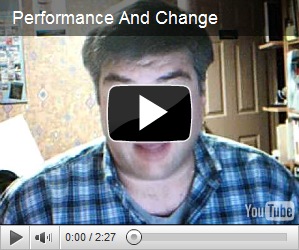A more appropriate title would have been "counting changes" but it would have hardly been as interesting. 
Change happens. And often.
In particular, when a product is in its operation and maintenance ("O&M") phase, changes are constant. (Note: O&M is frequently called "production", and this simple choice of words may also be part of the issue.) But, too often, changes to products are handled as afterthoughts. When handled as "afterthoughts", product features and functions receive far less discipline and attention than warranted by the the magnitude of the change were the new or different feature/functionality have been introduced during the original product development phase.
In other words, treating real development as one would treat a simple update just because the development is happening while the product is in production is a mistake. However, it’s a mistake that can be easily diffused and reversed.
O&M work has technical effort involved. Just because you’re "only" making changes to existing products that have already been designed, does not mean that there aren’t design-related tasks necessary to make the changes in the O&M requests. Ignoring the engineering perspective of changes just because you didn’t do the original design or because the original (lion’s share of) design, integration and verification work were done a while back doesn’t mean you don’t have engineering tasks ahead of you.
In O&M, analysis is still needed to ensure there really aren’t more serious changes or impacts resulting from the changes. In O&M, technical information needs to be updated so that they are current with the product. In business process software, much of the O&M has to do with forms and reports. Even when creating/modifying forms, while there may not be any technical work, per se, there is design work in the UI. The form or report itself. And even if you didn’t do that UI design work, you still need to ensure that the new form can accept the data being rendered to it (or vice-versa: the data can be fit into the report).
It’s frightening, when you think about it, how much of the products we use every day — and many more products that we don’t know about that are used by government and industry 24/7 — are actually "developed" while in the "O&M" phase of the product life cycle when the disciplines of new product development are often tossed out the door with the packing material the original product came in. Get that? Many products are developed while in the "official" O&M phase, but when that happens they’re not created with the same technical acumen as when the product is initially developed.
(I have more on this topic, and how to deal with business operations for products in the O&M phase, in this Advisor article from the Cutter consortium.)
In a sadly high number of operations I’ve encountered, once a product is put into production, i.e., is in O&M, the developers assigned to work on it aren’t top-notch. Even in those organizations where such deleterious decision-paths aren’t chosen, the common experience in many organizations is that the developers are relied-upon even more for their intimate knowledge of the product and the product’s documented functionality — as would have otherwise been captured in designs, specifications, tests and similar work artifacts of new product development. In these organizations, the only way to know the current state of the product is to know the product. And, the only way to fix things when they go wrong is to pull together enough people who retain knowledge of the product and sift through their collective memories. The common work artifacts of new product development are frequently left to rot once the product is in O&M, and what’s worse is that the people working on the new/changed features and functionality don’t do the same level of review or analysis that would have been done were the functionality or other changes been in-work when the product was originally developed. Of course, it’s rather challenging to conduct reviews or analysis when the product definition only exists as distributed among people’s heads. Can you begin to see the compounding technical debt this is causing?
I’ve actually heard developers working on legacy products question the benefits of technical analysis and reviews for their product! As though their work is any more immune to defect-inducing mistakes than the work of the new product developers. What’s worse is that without the reviews and analyses, defect data to support such a rose-colored view seldom exists! It’s entirely likely, instead, that were such data about in-process defects (e.g., mistakes in logic, design, failing to account for other consequences) to be collected and analyzed, it would uncover a strong concentration of defects resulting from insufficient analysis that should have happened before the O&M changes were being made.
Except in cases where O&M activities are fundamentally not making any changes to form, fit, feature, appearance, organization, integrity, performance, complexity, usability or function of the product, there should be engineering analysis. For that matter, what the heck are people doing in O&M if they’re not making any changes to form, fit, feature, appearance, organization, integrity, performance, complexity, usability or function of the product?!
If anyone still believes O&M work doesn’t involve engineering, then they might need to check their definition of O&M. Changes to product are happening and they’d better be counted because if not, such thinking fools organizations into believing their field failures aren’t related to this. Changes count as technical work and should be treated as such.
(I have more on this topic, including how to help treat O&M and development with more consistent technical acumen in this Advisor article from the Cutter consortium.)





